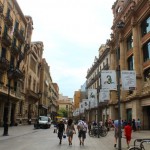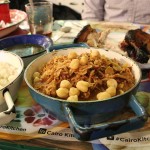Photo Story: History behind the three key sights of Praça do Comércio

From Rossio Square, head on the path of Rua de Augusta and you will reach Praça do Comércio (Square of Commerce) in approximately 15 minutes.
Like Rossio Square, I found it difficult to understand the significance of the huge equestrian statue of King José I which stood before me, and the Arc which encapsulated it. Essentially Praça do Comércio is a wide square surrounded by symmetrical buildings. Because of the summer’s heat, I could tell that most people were in a hurry to take photos and leave for a shadier spot. The Tagus River and the twin pillars Cais Das Colunas did seem like better chill out spots. (Stay tuned for the next post).
In the meantime, do enjoy the little history behind the three key sights of Praça do Comércio.
With credits to Wikipedia.
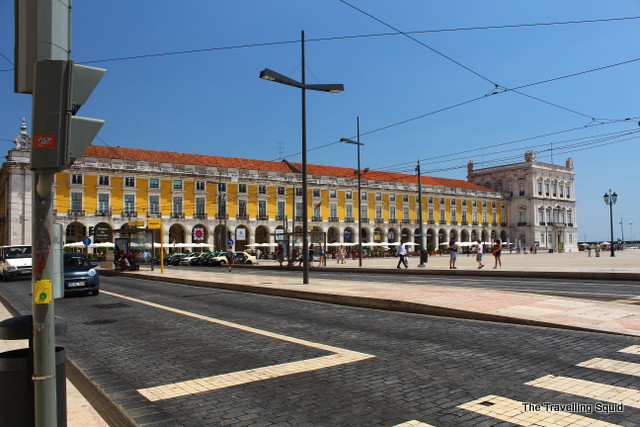
History in a nutshell
Situated near the Tagus river, the square is still commonly known as Terreiro do Paço (Palace Square), because it was the location of the Royal Ribeira Palace until it was destroyed by the great 1755 Lisbon Earthquake. After the earthquake, the square was completely remodelled as part of the rebuilding of the Pombaline Downtown, ordered by Sebastião José de Carvalho e Melo who was the Minister of the Kingdom of Portugal from 1750 to 1777.
1. The Equestrian statue of King José I
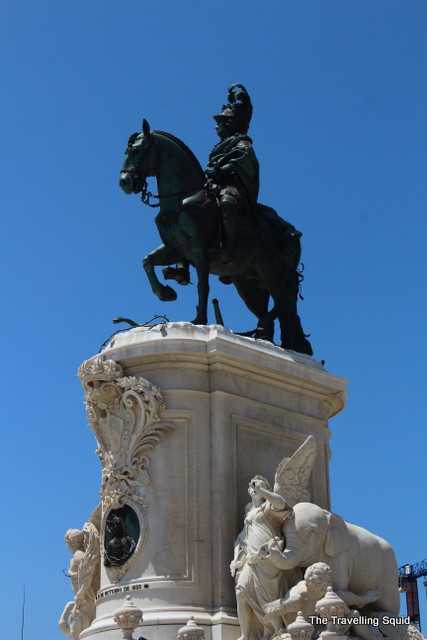
The centrepiece of the square is the equestrian statue of King José I, inaugurated in 1775. This bronze statue, the first monumental statue dedicated to a King in Lisbon, was designed by Joaquim Machado de Castro, Portugal’s leading sculptor of the time.

2. Arco da Rua Augusta

Opening towards the Augusta Street (Rua Augusta), which links the square with the other traditional Lisbon square, the Rossio, the original project by Eugénio dos Santos planned a triumphal arch and was only realised in 1875. This arch, usually called the Arco da Rua Augusta, was designed by Veríssimo da Costa. It has a clock and statues of the Glory, Ingenuity and Valour (by the French sculptor Calmels) and those of important men such as Viriatus, Nuno Álvares Pereira and Vasco da Gama.

3. Government Bureaus
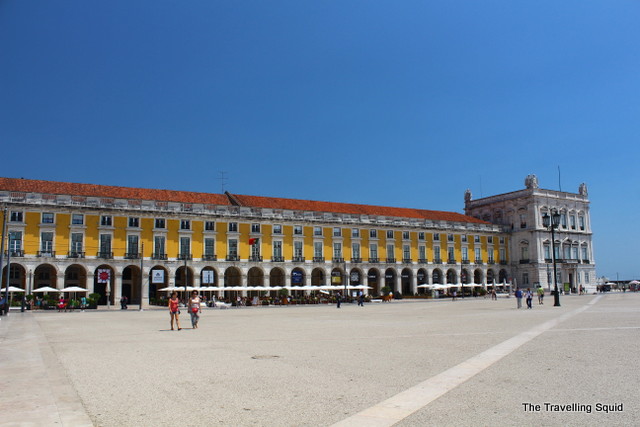
The square was named Praça do Comércio to indicate its new function in the economy of Lisbon. The symmetrical buildings of the square were filled with government bureaus that regulated customs and port activities.
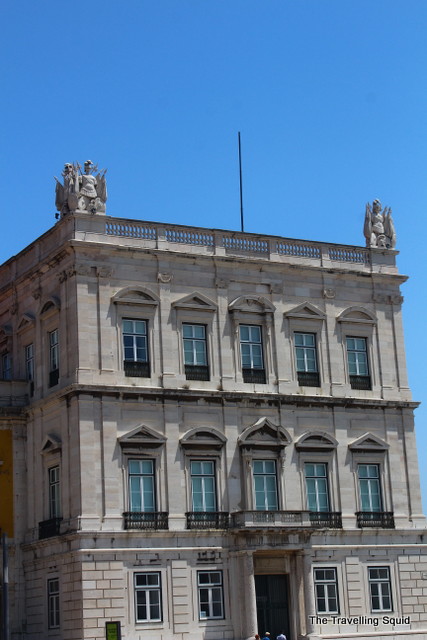
The scene of an assassination
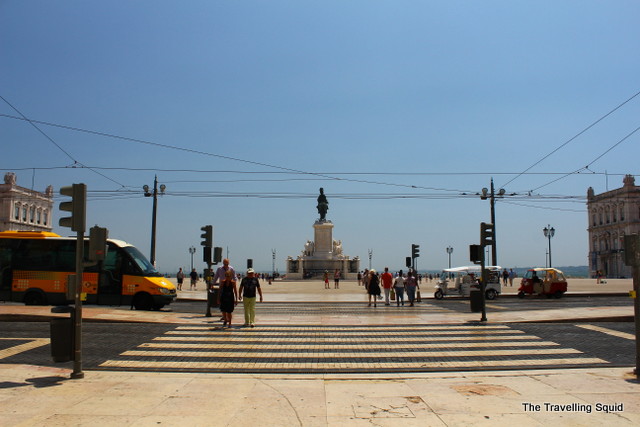
On 1 February 1908, the square was the scene of the assassination of Carlos I, the penultimate King of Portugal. On their way back from the palace of Vila Viçosa to the royal palace in Lisbon, the carriage with Carlos I and his family passed through the Terreiro do Paço. While crossing the square, shots were fired from the crowd by at least two men: Alfredo Luís da Costa and Manuel Buiça. The king died immediately, his heir Luís Filipe was mortally wounded, and Prince Manuel was hit in the arm. The assassins were shot on the spot by members of the bodyguard and later recognized as members of the Republican Party – which two years later overthrew the Portuguese monarchy.
* * *
Stay tuned for the next post on the twin pier columns – Cais Das Colunas and the Tagus River.



